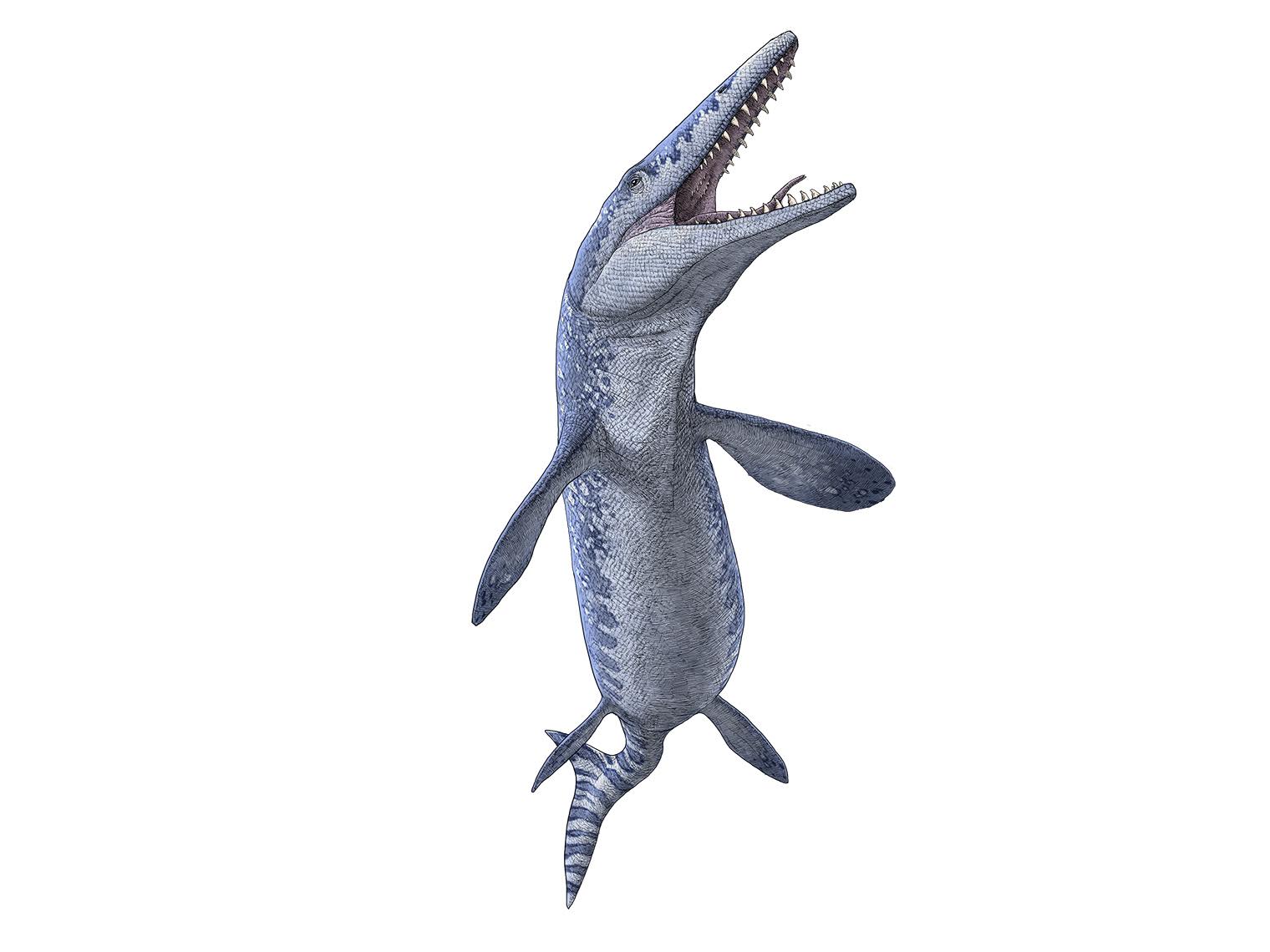Miners searching for gemstones near Lethbridge, Alberta, have found the remains of a gigantic sea creature that lived 70 million years ago.
After discovering the fossils in mid-June, the miners alerted the Royal Tyrrell Museum in Drumheller. Paleontologists have since identified the specimen as a 20-foot-long mosasaur, a type of marine animal that lived during the age of the dinosaurs, and went extinct with them 66 million years ago.
Mosasaurs diversified in the Cretaceous seas for tens of millions of years and left their remains behind on every continent, including Antarctica. Scientists think the largest mosasaur species grew to be more than 50 feet long, and the animal’s dominance as an ocean hunter has earned it the nickname “Sea Rex.”
“These animals were definitely predators,” Dan Spivak, head of the resource management program at the museum, said in an email. “Mosasaurs probably ate a variety of things including turtles, ammonites, and fish.”

Ammonites, a type of extinct hard-shelled mollusk, fossilize into gemstones called ammolites, which are incorporated into jewelry and other decorative art. Ammolites are plentiful in fossil beds across Alberta, Saskatchewan, and Montana, which used to be covered by a Cretaceous ocean called the Bearpaw Sea.
Enchanted Designs, the company that found the fossils, were looking for these ancient shells at the mine. “As we were scraping, we found a big rock formation, a concretion that was very irregular,” mine manager Michael Shideler told Global News, describing the rock that contained the fossils.
The fossils, which include the skull and forebody of the mosasaur, were extracted and moved to the Royal Tyrrell Museum last week. “The recovery of the specimen was expedited by the staff and equipment of the mine and we are grateful for their help in excavating the fossil and delivering it to us,” Spivak said.
Over the coming months, the museum staff will study the remains and decide if they are in good enough condition for public display. Either way, the mosasaur will remain part of the Tyrrell’s research collection for the foreseeable future, Spivak said.
The new specimen joins a separate mosasaur skeleton at the museum that was recovered from another ammonite mine near Lethbridge.
Mosasaurs have become more famous in recent years due to their supporting roles as beefed-up sea monsters in the Jurassic World franchise (real mosasaurs were not as large as the bulky beasts depicted in the movies).
The animals had another brush with Hollywood when actor Russell Crowe drunkenly bought a mosasaur skull from Leonardo DiCaprio about 10 years ago, according to his own accounting of the events. The skull, which Crowe said he purchased for his kids, was sold in 2018 as part of Sotheby's Australia’s “Russell Crowe: The Art of Divorce” sale.
from VICE http://bit.ly/2KAz21H
via cheap web hosting
No comments:
Post a Comment